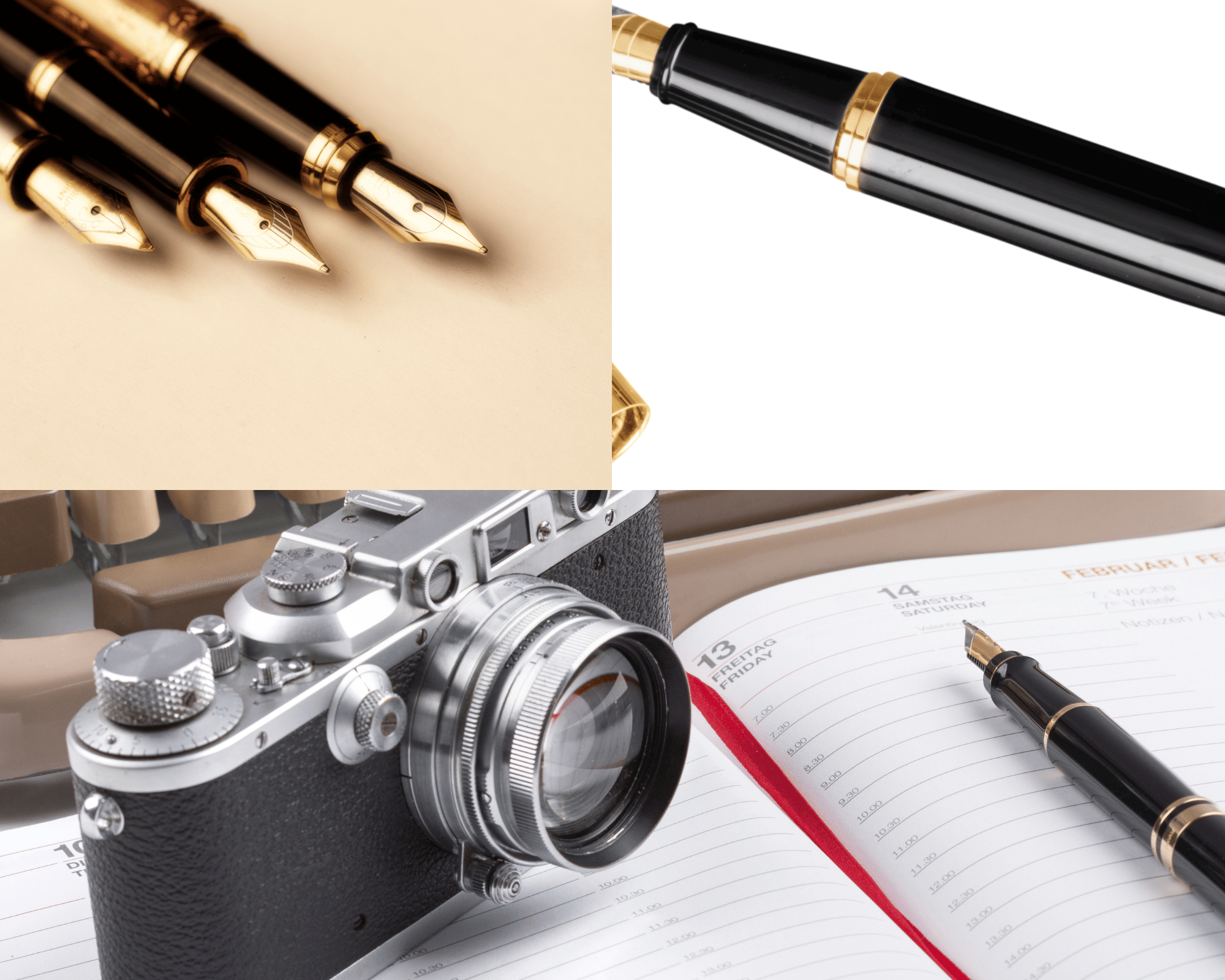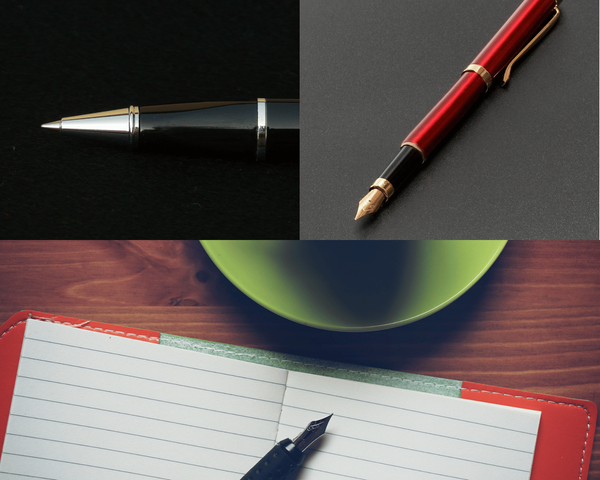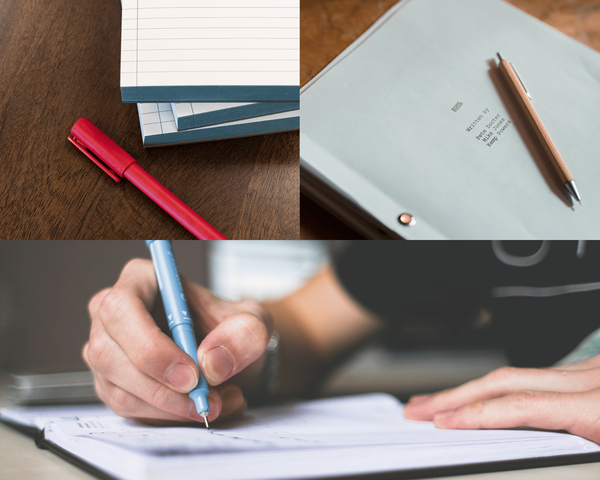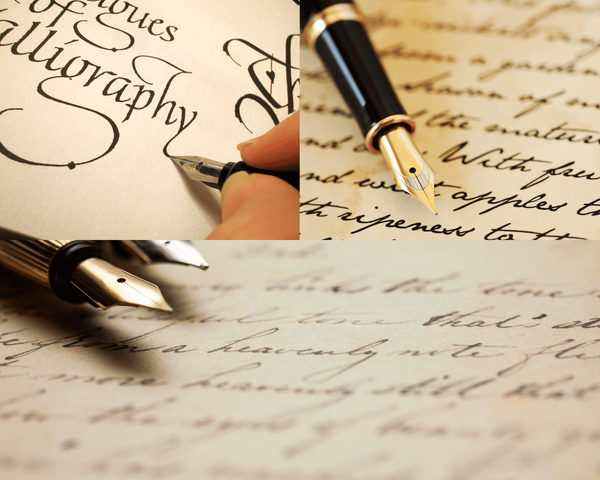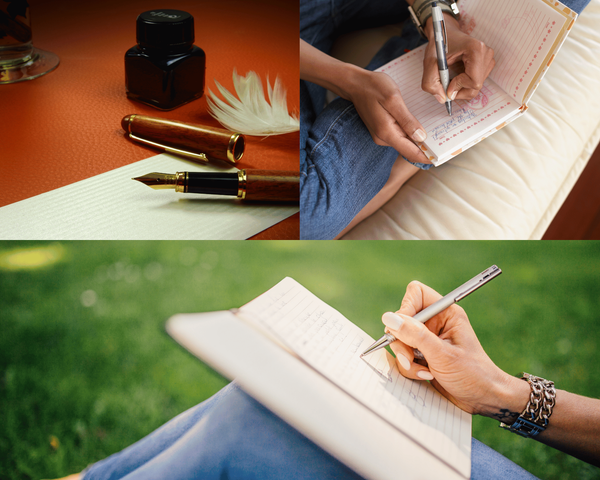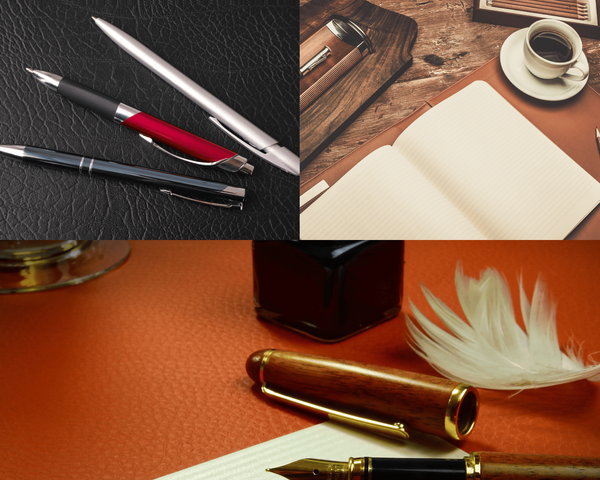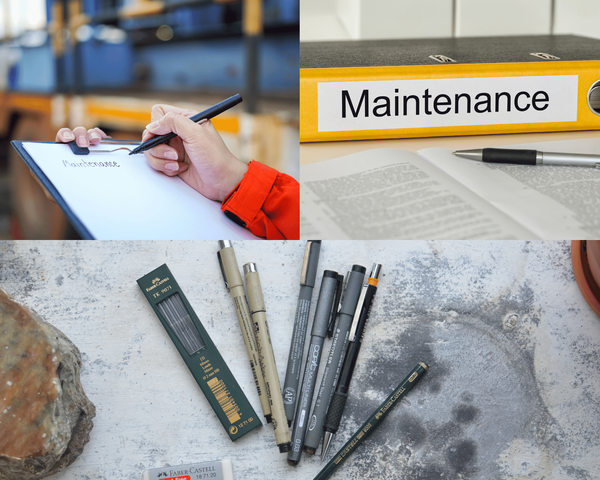Fountain pens have long been cherished by writing enthusiasts for their elegance and smooth writing experience. Unlike ballpoint pens, fountain pens use liquid ink, which flows effortlessly onto the paper. This article will guide you through the different types of fountain pens, how to use them, and how to maintain them for longevity.
Key Takeaways:
- Discover the various types of fountain pens and their unique features.
- Learn how to use and maintain your fountain pen for optimal performance.
- Explore affordable and vintage fountain pen options.
Introduction to Fountain Pens
Fountain pens have long been cherished by writing enthusiasts for their elegance and smooth writing experience. Unlike ballpoint pens, fountain pens use liquid ink, which flows effortlessly onto the paper. This article will guide you through the different types of fountain pens, how to use them, and how to maintain them for longevity.
Cartridge Fountain Pens
Cartridge fountain pens are popular for their convenience. They use pre-filled ink cartridges that are easy to replace, making them ideal for beginners. Simply insert a new cartridge when the ink runs out, and you're ready to write again. This type of pen is perfect for those who want a hassle-free writing experience.
Cartridge pens come in various designs and price ranges, making them accessible to everyone. They are also available in different nib sizes, allowing you to choose the one that best suits your writing style. Whether you're a student or a professional, a cartridge fountain pen can be a reliable companion.
Converter Fountain Pens
Converter fountain pens offer more flexibility compared to cartridge pens. They use a converter, a small device that allows you to fill the pen with bottled ink. This gives you the freedom to choose from a wide range of ink colors and brands. Converters are reusable, making them an eco-friendly option.
Using a converter pen requires a bit more effort, as you need to fill the converter with ink manually. However, many fountain pen enthusiasts enjoy this process as it adds a personal touch to their writing experience. Converter pens are a great choice for those who love experimenting with different inks.
Piston Fountain Pens
Piston fountain pens are known for their large ink capacity. They have a built-in piston mechanism that draws ink directly into the pen's barrel. This type of pen is ideal for those who write frequently and don't want to refill their pen often. Piston pens are also favored for their smooth ink flow.
One of the advantages of piston pens is their ability to hold a significant amount of ink, reducing the need for frequent refills. They are often considered a more advanced option, suitable for experienced fountain pen users. If you enjoy long writing sessions, a piston fountain pen might be the perfect choice for you.
Eyedropper Fountain Pens
Eyedropper fountain pens are a unique type that allows you to fill the entire barrel with ink using an eyedropper. This results in an impressive ink capacity, making them ideal for extended writing sessions. Eyedropper pens are often favored by those who appreciate a vintage aesthetic.
Filling an eyedropper pen can be a bit messy, but the large ink capacity makes it worth the effort. These pens are also known for their simplicity, as they have fewer moving parts compared to other types. If you enjoy the process of writing and don't mind a bit of ink on your fingers, an eyedropper pen can be a rewarding choice.
Demonstrator Fountain Pens
Demonstrator fountain pens are transparent or semi-transparent, allowing you to see the ink inside the pen. This unique feature makes them visually appealing and adds an element of fun to your writing experience. Demonstrator pens are available in various filling mechanisms, including cartridge, converter, and piston.
The transparency of demonstrator pens also makes it easy to monitor your ink levels, ensuring you never run out unexpectedly. These pens are a great conversation starter and can be a delightful addition to any fountain pen collection. If you appreciate aesthetics and functionality, a demonstrator pen is worth considering.
Flex Nib Fountain Pens
Flex nib fountain pens are designed to create varying line widths based on the pressure applied while writing. This makes them ideal for calligraphy and artistic writing. Flex nibs can produce beautiful, expressive lines, adding a touch of elegance to your handwriting.
Using a flex nib pen requires some practice, as you need to control the pressure to achieve the desired effect. However, once mastered, pocket pens, lamy pens, ink bottle, these pens can elevate your writing to a new level. Flex nib pens are perfect for those who enjoy creative writing and want to add a personal flair to their work.
Stub Nib Fountain Pens
Stub nib fountain pens have a flat, broad tip that creates thick horizontal lines and thin vertical lines. This unique nib shape is perfect for italic writing and calligraphy. Stub nibs can add a distinctive style to your handwriting, making your writing stand out.
Writing with a stub nib pen can be a bit different from using a standard nib, but the results are worth the effort. These pens are ideal for special occasions, nib size, piston filler, steel nib, store ink, vacuum filler, bottled ink such as writing invitations or greeting cards. If you want to add a touch of sophistication to your writing, a stub nib fountain pen is an excellent choice.
How to Use a Fountain Pen
Using a fountain pen is a delightful experience, but it requires some practice. Start by holding the pen at a comfortable angle, usually around 45 degrees. Apply gentle pressure and let the ink flow naturally onto the paper. Avoid pressing too hard, as this can damage the nib.
It's also important to use the right type of paper. Fountain pens work best on smooth, high-quality paper that prevents ink from bleeding or feathering. Experiment with different papers to find the one that suits your writing style. With a bit of practice, you'll soon master the art of using a fountain pen.
Fountain Pen Maintenance
Maintaining your fountain pen is essential for optimal performance. Regular cleaning prevents ink buildup and ensures a smooth writing experience. To clean your pen, disassemble it and rinse the nib and feed with lukewarm water. Use a bulb syringe to flush out any remaining ink.
For a deeper clean, you can use a pen flush solution. Soak the nib and feed in the solution for a few hours, then rinse thoroughly with water. Regular maintenance will keep your pen in top condition and extend its lifespan. Make it a habit to clean your pen every few weeks, blingy pens, other pens, one pen, great pocket pen, best fountain pen especially if you use it frequently.
Fountain Pen Ink Types fountain pen world
Fountain pen ink comes in various types, each offering unique characteristics. Dye-based inks are the most common and are available in a wide range of colors. They are easy to clean and flow smoothly. Pigment-based inks are more water-resistant and offer better permanence, but they can be harder to clean.
There are also specialty inks, such as shimmer inks that contain metallic particles, and scented inks that add a pleasant aroma to your writing. Experimenting with different ink types can be a fun way to enhance your writing experience. Choose the ink that best suits your needs and preferences.
Best Affordable Fountain Pens fountain pen nib
You don't need to break the bank to enjoy the pleasure of writing with a fountain pen. There are many affordable options that offer excellent performance and quality. Brands like Lamy, Pilot, and TWSBI offer budget-friendly pens that are perfect for beginners and experienced users alike.
Affordable fountain pens come in various designs and nib sizes, allowing you to find the one that best suits your writing style. These pens are also great for gifting, ink flow, interchangeable nibs, favorite fountain pens, gold nibs as they offer a touch of elegance without a hefty price tag. If you're looking for a reliable and affordable fountain pen, there are plenty of options to choose from.
Vintage Fountain Pens best fountain pen types
Vintage fountain pens are a treasure for collectors and writing enthusiasts. These pens often feature unique designs and craftsmanship that are hard to find in modern pens. Brands like Parker, Sheaffer, and Waterman have a rich history of producing high-quality fountain pens that are still sought after today.
Collecting vintage fountain pens can be a rewarding hobby, as each pen has its own story and character. These pens often require more maintenance, but the effort is worth it for the writing experience they offer. If you appreciate history and craftsmanship, vintage fountain pens are a fascinating area to explore.
Fountain Pen Troubleshooting
Even the best fountain pens can encounter issues from time to time. Common problems include ink flow issues, nib skipping, and hard starts. To troubleshoot these issues, start by cleaning your pen thoroughly. Ink buildup can often cause flow problems, and a good cleaning can resolve many issues.
If cleaning doesn't solve the problem, check the nib alignment. Misaligned tines can cause skipping and inconsistent ink flow. Gently adjust the tines with your fingers or a pair of tweezers. If you're still experiencing issues, it might be time to seek professional help. Many pen shops offer repair services to get your pen back in working order.
Summary
Fountain pens offer a unique and enjoyable writing experience. From cartridge and converter pens to piston and eyedropper pens, there are many types to choose from. Understanding how to use and maintain your fountain pen is essential for optimal performance. Whether you're looking for an affordable option or a vintage treasure, there's a fountain pen out there for everyone.
FAQ
What is the best type of fountain pen for beginners?
Cartridge fountain pens are ideal for beginners due to their ease of use and low maintenance. They are convenient and straightforward, making them perfect for those new to fountain pens.
How often should I clean my fountain pen?
It's recommended to clean your fountain pen every few weeks, especially if you use it frequently. Regular cleaning prevents ink buildup and ensures a smooth writing experience.
Can I use any type of ink in my fountain pen?
Not all inks are suitable for fountain pens. It's best to use inks specifically designed for fountain pens to avoid clogging and damage. Experiment with different ink types to find the one that best suits your needs.


